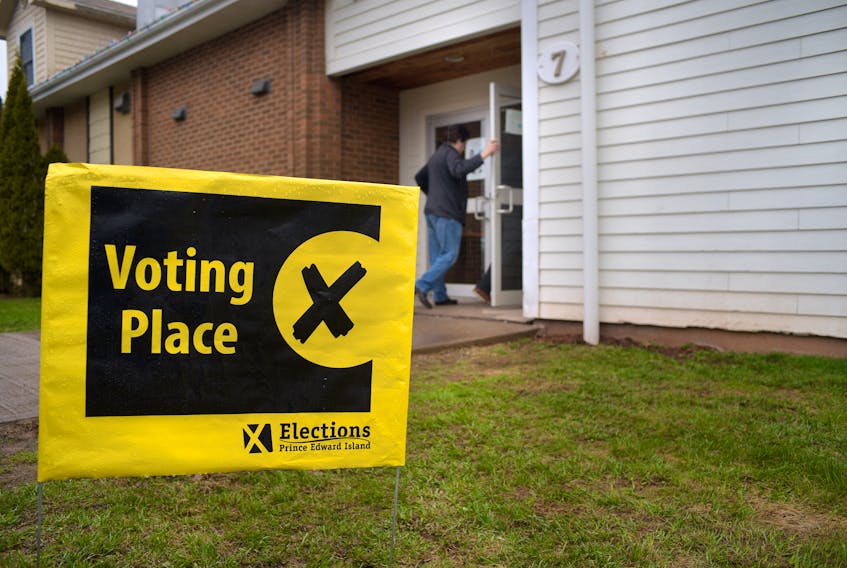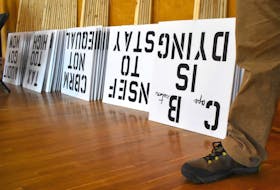Had it been contested on the same basis as the election that accompanied it, Tuesday’s referendum on electoral reform in Prince Edward Island would have passed handily, winning a solid majority of the province’s 27 ridings.

As it was, however, the proposition failed for having the support of only 48.8 per cent of the vote overall — down from 52 per cent of the vote in a 2016 plebiscite, which the provincial government chose to ignore — while the Progressive Conservatives are claiming a mandate to govern the province with 36.5 per cent of the vote.
But I am burying the lede. The story of the election, with possible reverberations nationwide, was of course the historic breakthrough of the province’s Green party. Though they did not do as well as pre-election polls had suggested, the Greens nevertheless posted their best result in any election, federal or provincial, in Canada’s history, with 30.6 per cent share of the popular vote — nearly twice the 16.8 per cent they obtained in British Columbia in 2017 — and eight seats, as many as they have in all of the country’s other legislatures combined.
Even if they do not form the government, to have achieved Official Opposition status alone will encourage voters across the country to look at them in a whole new way: not as lovable losers, a protest vote without a hope of actually winning, but as legitimate contenders — if not for power, than at least for representation.
This is in the face of a system notably rigged against third parties.
The party had already made important gains in several recent elections, electing their first member of Parliament, Elizabeth May, in 2011; their first member of the Ontario legislature, Mike Schreiner, in 2018; and in B.C., their first multi-member caucus, on whose support the NDP government must rely (the party also elected three members in last year’s election in New Brunswick). But this was the biggest advance yet.
And yet the election results make the best case for why electoral reform, despite the narrow referendum loss, is not just desirable, but inevitable. The election was not only a first for returning so many Greens, or the first in which the top two spots were not occupied by the Conservatives and Liberals — it was also the first since 1890 not to deliver a majority of the seats to one party. This joins a trend observed of late in elections nationwide. New Brunswick in 2018, B.C. in 2017, Ontario and Quebec in the last decade, nine of the last 20 federal elections: “hung parliaments” are far from exceptional any more.
That’s not supposed to happen under the current, single-member plurality electoral system, also known as “first past the post.” Indeed, to its defenders that is its main advantage: the supposed tendency to produce “stable majority governments,” albeit almost always with a minority of the vote. It’s also supposed to drive politics, by virtue of its bias in favour of larger parties, towards a two-party system, a phenomenon known as Duverger’s Law.
And where there are only two parties contesting an election, first past the post works tolerably well. Though it still elects only one member in each district — the key distinction between it and more proportional systems — each is at least elected by a majority, as is the government as a whole.
But add a third party, and a fourth, and a fifth, and the divergence from majority rule, both locally and overall, increases — to say nothing of the many other distortions and injustices to which first past the post gives rise: the lack of representation for any but the winning party’s voters in a riding; the resulting pressure on voters to vote “strategically” in order to avoid “splitting the vote”; the tendency to favour parties that bunch their vote geographically over those whose support is more evenly spread, and so on.
We are trying to stuff multi-party politics into a system built for two.
In fact, Canada has not had a two-party system at the federal level since 1921, the year the Progressive Party debuted with 21 per cent of the vote and 58 seats. The years since then have seen the arrival of first the Cooperative Commonwealth Federation (forerunners of the NDP), then the Reform Party (reunited with the Progressive Conservatives to form today’s Conservative Party), the Bloc Québécois, the Greens, and most recently the People’s Party.
Provincial politics have followed suit. Eight of the 10 provinces now have multi-party legislatures. Three are governed by a party not named Liberal or Conservative. As late as 1997, the 10 legislatures combined had just 38 third-party members — 21, outside Ontario. There are now 57.
Again, this is in the face of a system notably rigged against third parties. How many voters would opt for newer or smaller parties if they had a chance of actually electing someone? (And wouldn’t it be a good thing if they did? In most areas of life we celebrate the influx of fresh blood, the stimulus to competition from new entrants. Only in politics is this treated as some kind of threat.)
Yet, notwithstanding the growing fragmentation of our politics, our democratic institutions carry on as if nothing had changed. We are trying to stuff multi-party politics into a system built for two, generating results that are not just wildly unrepresentative but increasingly unstable.
How long can the “stable majorities” pretense be maintained? At some point the disparity will prove unbearable: not only between the proportions of votes and seats won, but between the system as we imagine it and reality.
Copyright Postmedia Network Inc., 2019
More from Andrew Coyne:









